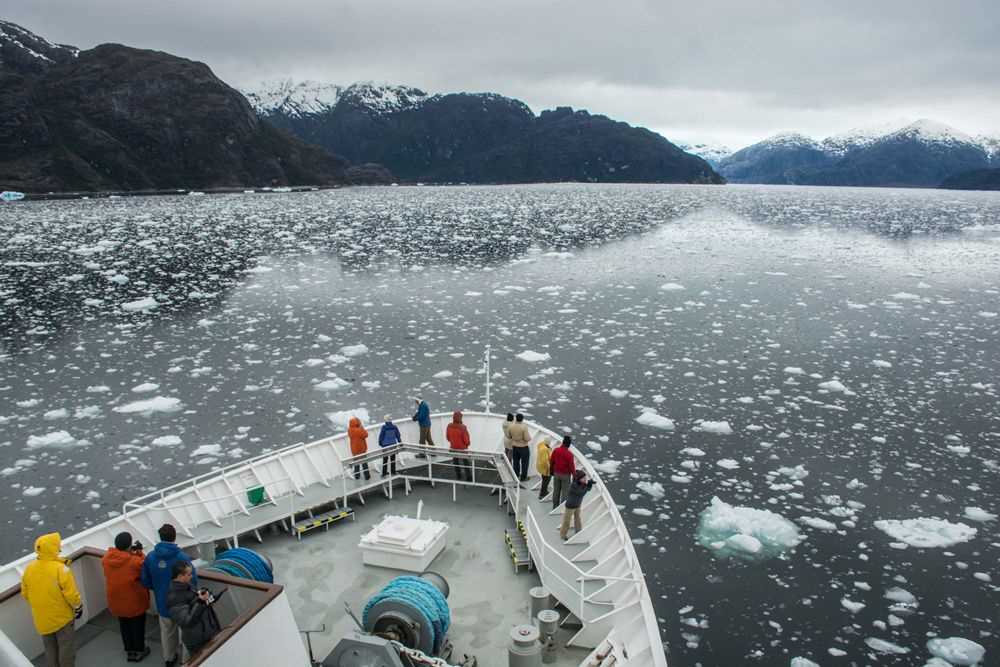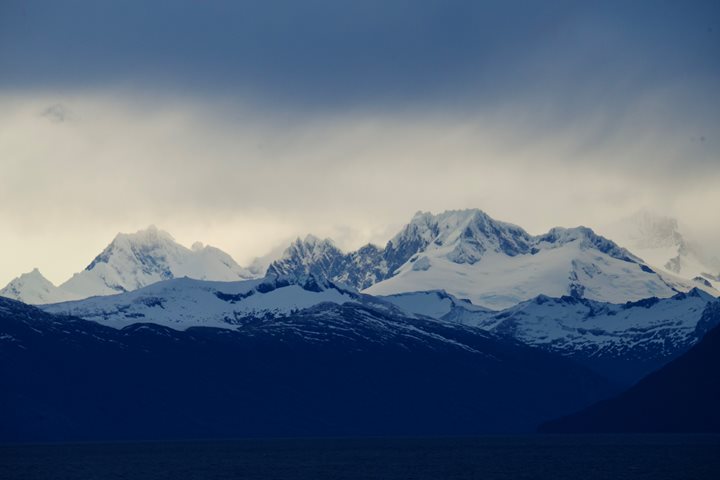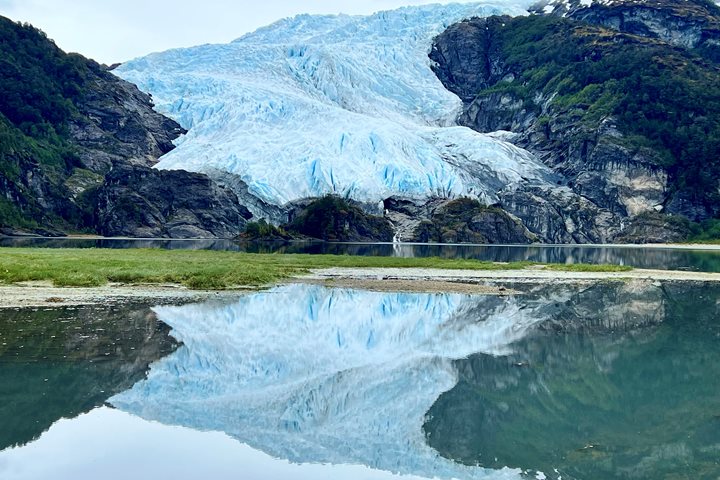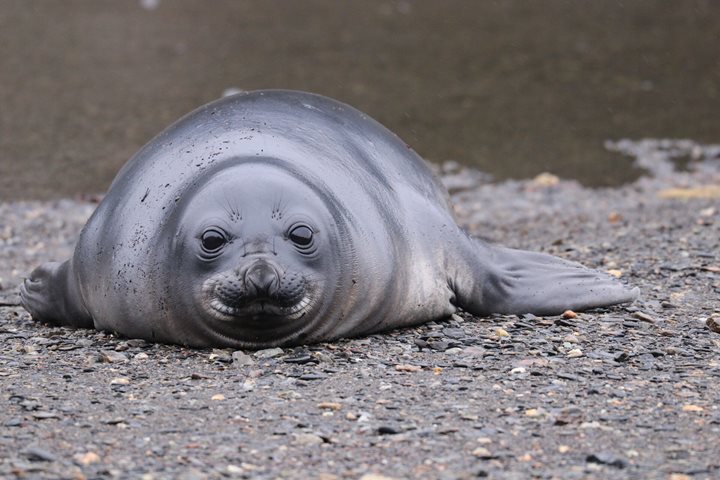Patagonia is one of the windiest and wettest regions on Earth. Southern Hemisphere westerly winds gain moisture and force as they cross the Pacific Ocean, and when they reach the Chilean fjords and channels, they ride up over the Andean mountain range, across the two main Patagonian icefields into Argentina. We’ve been able to feel these strong winds—and the intense precipitation that comes with them—during National Geographic Explorer’s navigation through the English Narrows.
Over lunch, the ship began heading east into the perimeter of the Southern Patagonia Icefield, which together with the Northern Patagonia Icefield and Cordillera Darwin Icefield (in Tierra del Fuego), are known to be the largest expanses of ice outside of Antarctica. These ice masses are what’s left of the massive Patagonian ice sheet that reached its maximum size about 25,000 to 18,000 years ago. The modern icefields are just a portion of their previous size. Today, the South Patagonian Icefield spans about 12,500 square kilometers, spreading across the border between Chile and Argentina. It hosts a spectacular array of glaciers and associated glacial features within the intricate network of fjords, the steep valleys carved by glaciers.
In the afternoon, we had the opportunity to enjoy a nice, damp Zodiac tour of the inner part of Penguin Fjord, which was totally filled with floating ice fragments. It’s here that the Yelcho glacier breaks up, forming numerous icebergs. As the glacier flows into the fjord, ice at the front of the glacier breaks off—in a process known as calving—and forms icebergs that can float out to sea.







